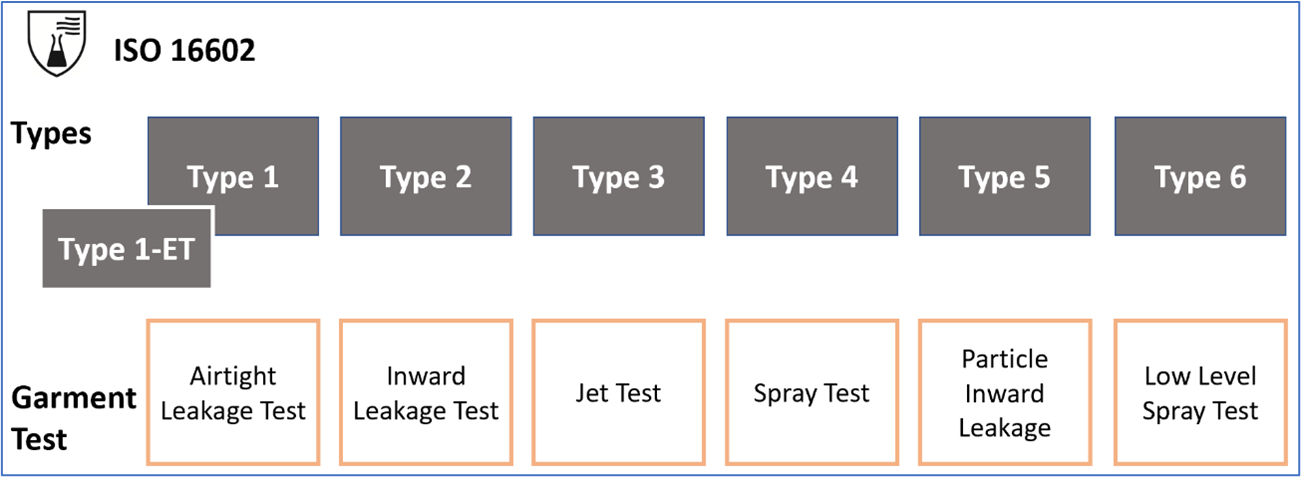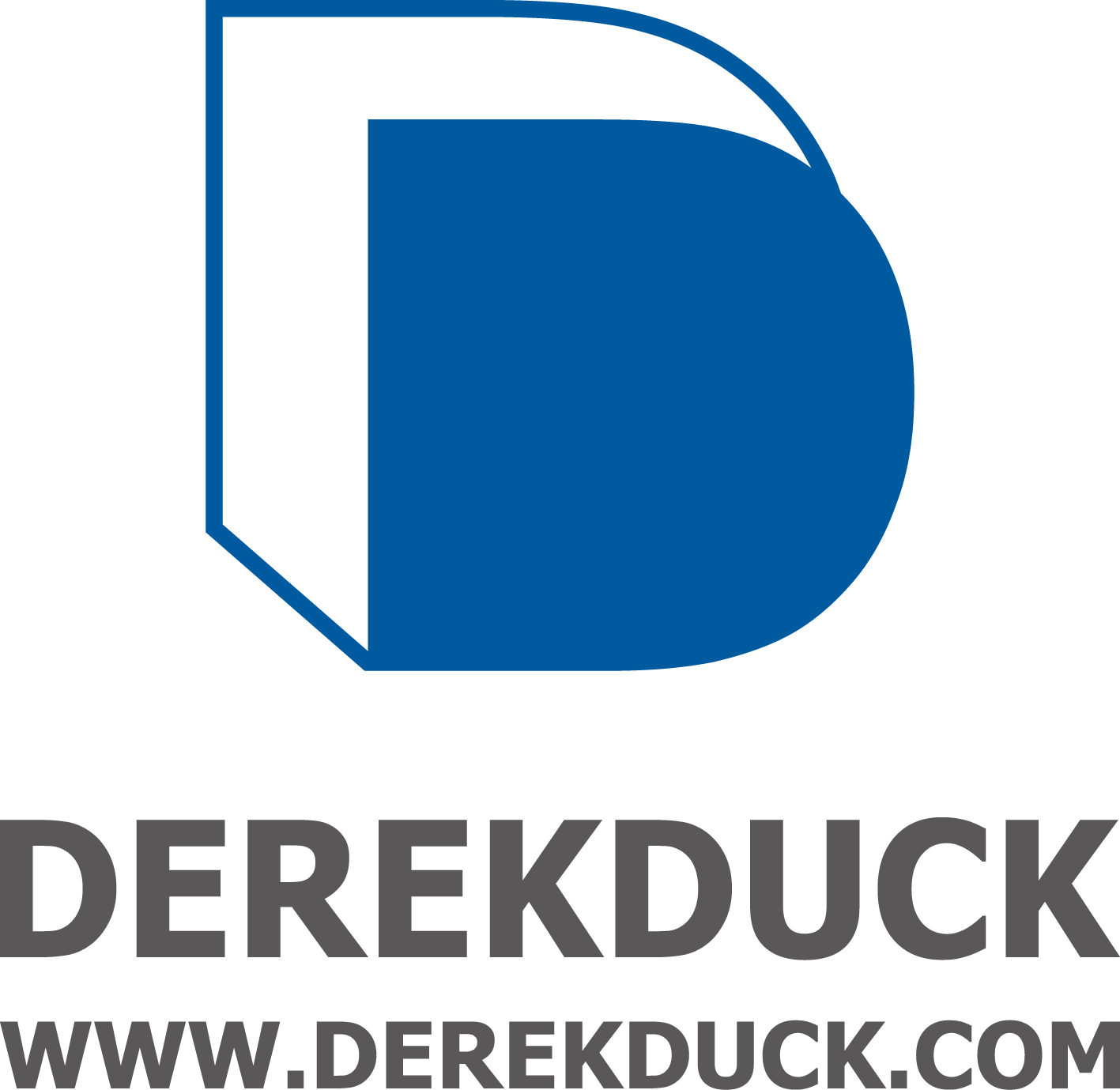CE Standards EN ISO 13688 for protective clothing
Protective clothing is designed to resist various hazardous situations, which includes exclusively the risks that may cause very serious consequences such as death or irreversible damage to health.
And based on different proteciton level, the protective clothing against chemicals are categaried by different types, and also have mutiple standards helping people to select the proper garment for protection.

Type 3
Liquid Tight Suits EN 14605:2005+A1:2009
Determination of resistance to penetration by a jet of liquid
- Fabric, seams and joints being tested with intense and pressurized liquid jet
- Low surface tension of liquid jets
- Requires coveralls with fully sealed seam
- One nozzle sprays at potential weak areas of coverall including chinstrap, crotch, zipper flap and joints
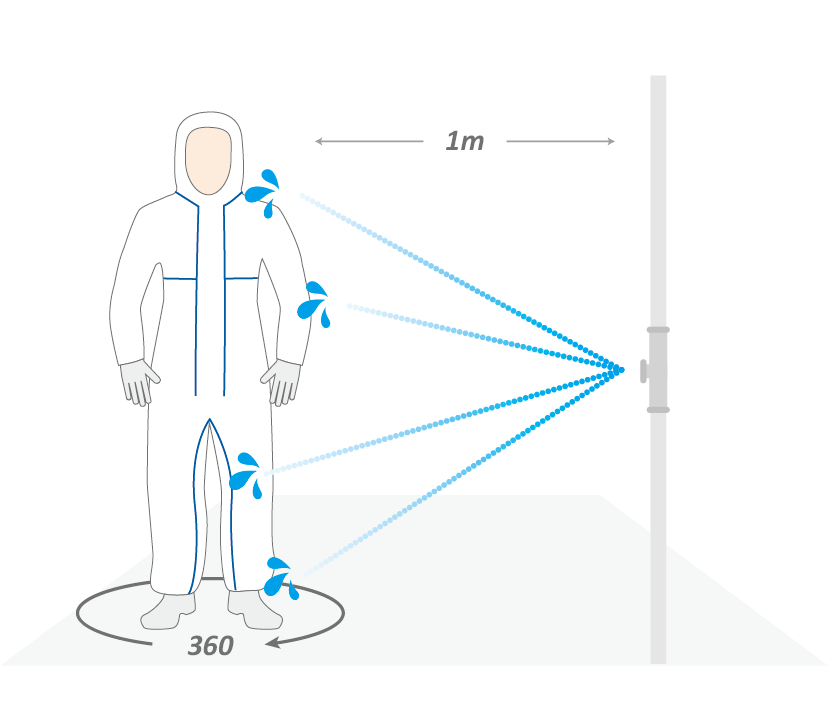

Type 4
Liquid Jet Suits EN 14605:2005+A1:2009
Determination of resistance to penetration by liquid spray
- 4 nozzles with general overspray of liquid without penetration on coverall
- Low surface tension of liquid sprays being tested on whole garment to experiment saturation of fabric
- Fabric, seams and joints being tested without pressurized liquid
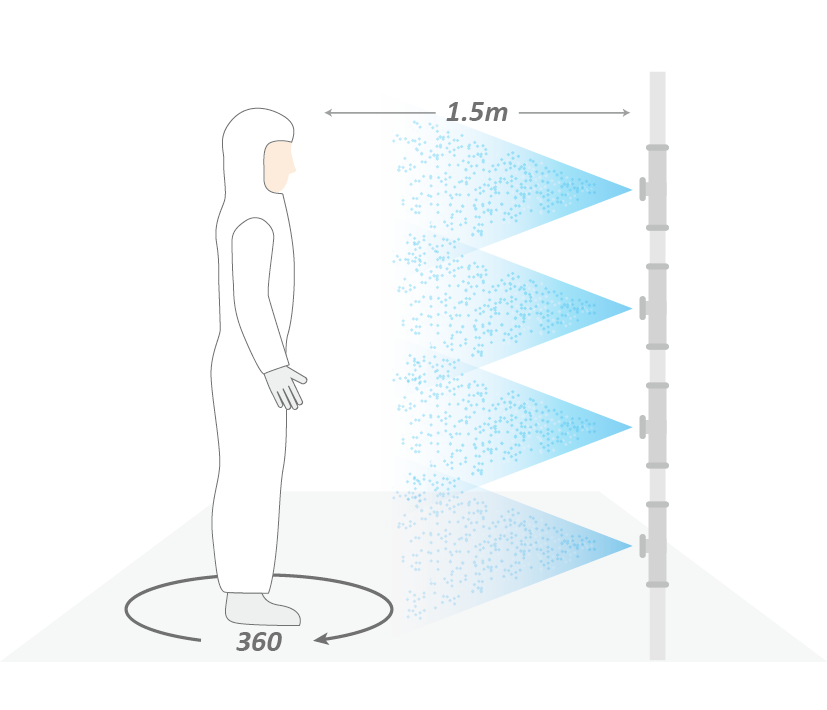

Type 5
Particulate Tight Suits EN ISO 13982-1:2004+A1:2010
Determination of inward leakage of aerosols & solid particles
- Spray cabin filled with dust
- The test is performed by real person, aims to simulate daily use
- Subject (real person) performs 3 exercises on treadmill
- Particle inward leakage(IL) and total inward leakage(TIL) must meet test requirements
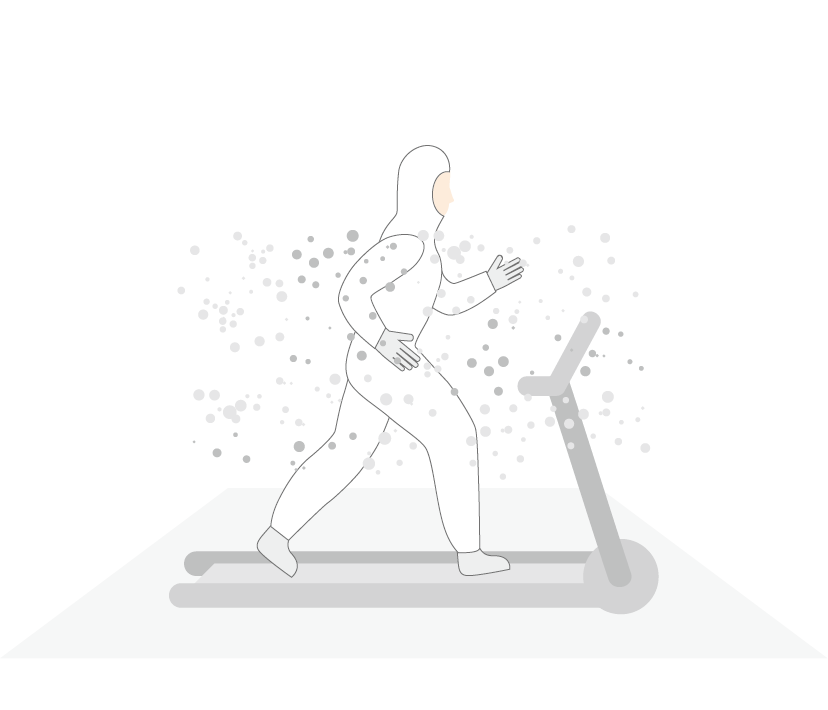

Type 6
Reduced Spray Suits EN 13034:2005+A1:2009
Determination of resistance to penetration by reduced liquid spray
- 4 nozzles with general overspray of liquid without penetration on coverall
- Low surface tension of liquid sprays being tested on whole garment to experiment saturation of fabric
- Fabric, seams and joints being tested without pressurized liquid
- About 40% of the liquid spray is loaded onto the suit compared with Type 4 test


Against Radioactive Contamination
EN 1073-2:2002
Determination of inward leakage of aerosols & solid particles
- The standard was developed to be applied in nuclear industry without protection against ionizing radiation
- The test follows the same protocols as Type 5 test with different judgement criteria
- 3 classifications indicate different protection level

Flame Retardant Test
EN 14116:2015
To check whether the fabric/materials burn while contacting heat source. Whether the fabric stops flame spreading if burned
- Requirements for limited flame spread Index 1 including no spreading of the flame, no flaming debris, no afterglow, a hole may be formed.
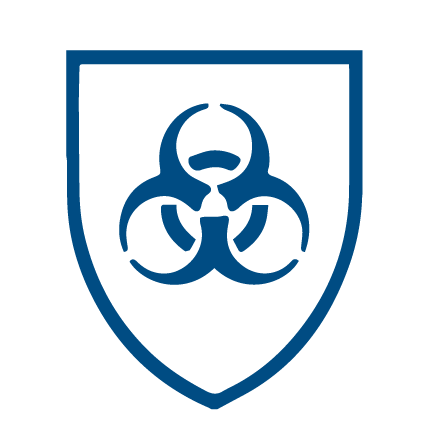
Against Biological Hazards
EN ISO 14126:2003
The standard specifies a set of requirements and test methods to measure the fabric protection against infective agents ISO 16603, ISO 16604, ISO/DIS 22611 determines penetration by blood, body fluids, blood borne and biologically contaminated aerosol ISO 22612, ISO 22610 determines the resistance of dry and wet microbial penetration.

Antistatic
EN 1149-5:2018
- The standard specifies a set of requirements and test methods to measure the fabric protection against static electricity or charge decay
- Electrostatic resistance is required when the wearer is exposed to environments where sparks could cause explosions or ignition
- Coveralls according to this standard do not offer protection from main voltages

Against Pesticides
EN ISO 27065
- Base materials and seams need fulfill the criteria in tensile, tear and puncture resistance.
- Penetration and repellency are tested by ISO 22608, using EC-DY surrogate diluted to 2.5%.
- Alongside the standard, the classification should also be indicated in the pictogram.

